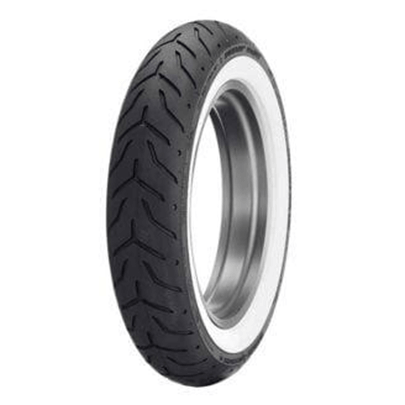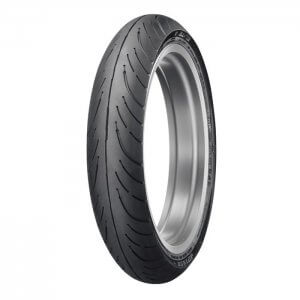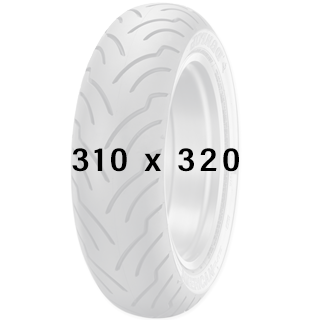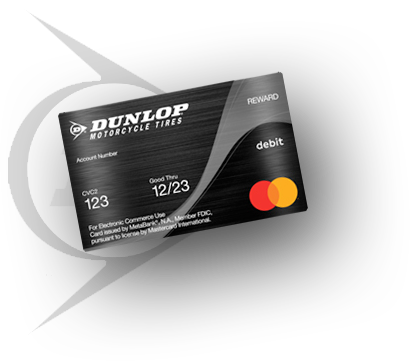Bias vs. Radial Motorcycle Tires
When it comes to motorcycle tires, right up until the mid-seventies, there was only one choice, the bias ply tire. Every motorcycle that hit the showroom floor rolled on bias ply tires during this time. Yet, in the early 1980s, the world of round rubber hoops would change forever.
In 1983, motorcycle racer Freddie Spencer won the first MotoGP using a radial ply tire on his rear wheel. The following year, technology had caught up enough for Randy Mamola to take the flag at the San Marino GP with radials front and rear.
Bias tires were the industry standard and radials took tire technology to a whole new level. But what are the differences between the two?
Furthermore, how do bias ply tires fit into the modern world of two wheels?
Bias Ply Tires
Bias, cross-ply, crossbelt, while we know them by many different names, their construction is the same. Multiple thin nylon or Kevlar cords band across the tire at an angle between 35-40 degrees. As one strand lays across the tire, the next is applied in the opposite direction to create a crisscross pattern.
Nylon or Kevlar cords woven across the entire radius of the tire gives the bias tire a range of unique features.
Firstly, the thickness of the tire is uniform around its full circumfrance, making the sidewall strong. This additional strength gives the bias tire exceptional protection against punctures.
More specifically, the bias construction and stiffer carcass can also handle heavy loads while returning high mileage before replacement is needed. The tread is designed to provide an even wear from the center to the shoulder for consistent handling as the miles add up.
As well as being supplied as original equipment for Harley-Davidsons, the cross-ply or bias tire remains one of the most popular replacements for cruiser motorcycles. Dunlop’s Elite 4s are offered in both bias and radial form so riders can choose their preference.
For off-road bikers, 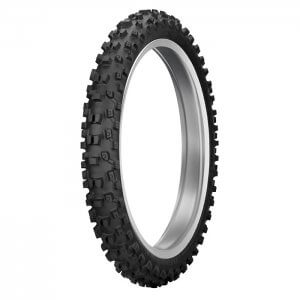 tires such as the MX33 and MX53 are mainly bias ply tires because they’re more durable and are preferred for tubed spoked wheels. Dunlop’s innovative new technologies offer superior grip, slide control, bump absorption, and enhanced durability for dirt riders, as these are not street legal.
tires such as the MX33 and MX53 are mainly bias ply tires because they’re more durable and are preferred for tubed spoked wheels. Dunlop’s innovative new technologies offer superior grip, slide control, bump absorption, and enhanced durability for dirt riders, as these are not street legal.
Pros: Strong sidewalls. Able to handle heavier loads. Hardwearing and more puncture resistant.
Cons: Higher sidewalls. May overheat at sustained high speed.
Radial Ply Tires
The old saying of ‘race on Sunday, sell on Monday’ has never been more accurate than in the case of the radial tire. Like most ground-breaking products, the radial underwent testing to its limits on the world’s racetracks before debuting on public roads.
The first stock motorcycle to wear radials was the 1984 Honda VF1000R. The road-legal production racer was heavy at 524-lb and fast at 150-mph. Unfortunately, bias tires couldn’t cope.
The construction method and material used made radial tires different.
Using steel cords or belts laid perpendicular to the tire, it was possible for the first time to give the tread and sidewall independent properties.
Advances in technology now make combining dual compounds on the crown and shoulder of the tread possible. As a result, radial tires can run cooler, faster, and longer. What’s more, they offer higher levels of wet weather grip than ever thought possible.
More specifically, on the Sportmax Roadsmart IV tires, the radial construction allows this tire to be durable for spiriting riding but also iron out bumps with a softer sidewall. Having both of these attributes wouldn’t be possible on a bias ply tire. 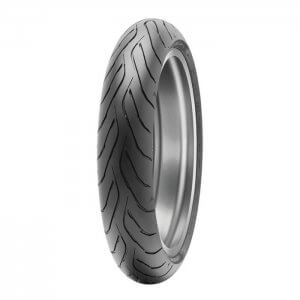
Pros: Excellent all-around performance. Lightweight design. Impressive wet weather grip.
Cons: Sidewalls are susceptible to punctures. Plus, manufacturers recommend not using inner tubes with most radials.
From inventing the first pneumatic tire in 1888 to cutting-edge dual-compound technology, Dunlop has you covered whether you are on the road, track or trail.
Find a dealer near you today for sales or advice and explore your Dunlop Motorcycle Tires options with a specialist.

